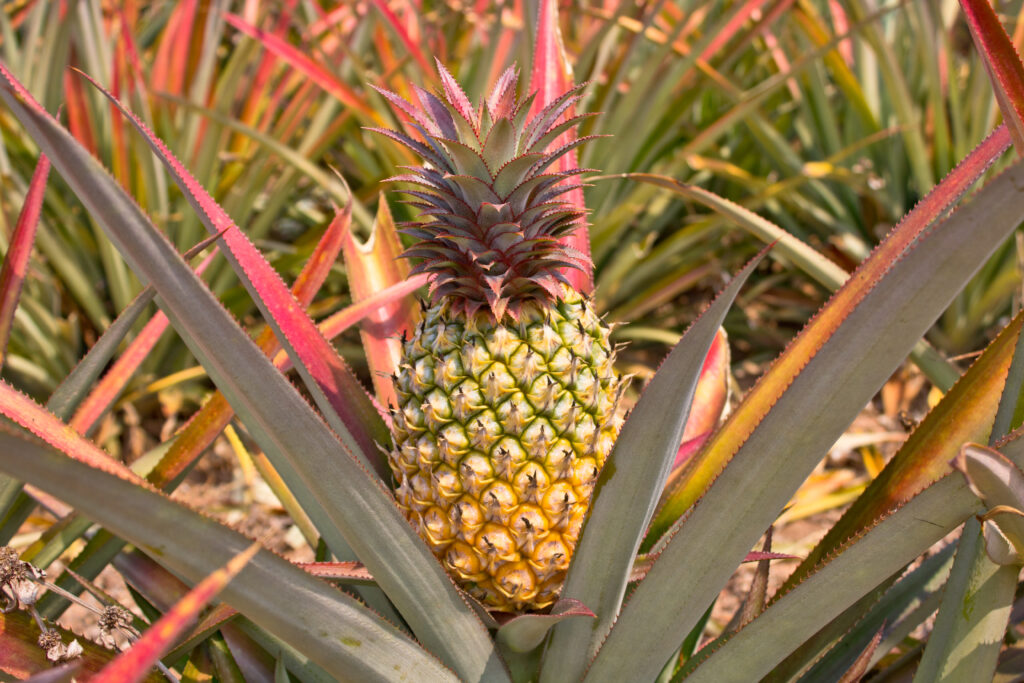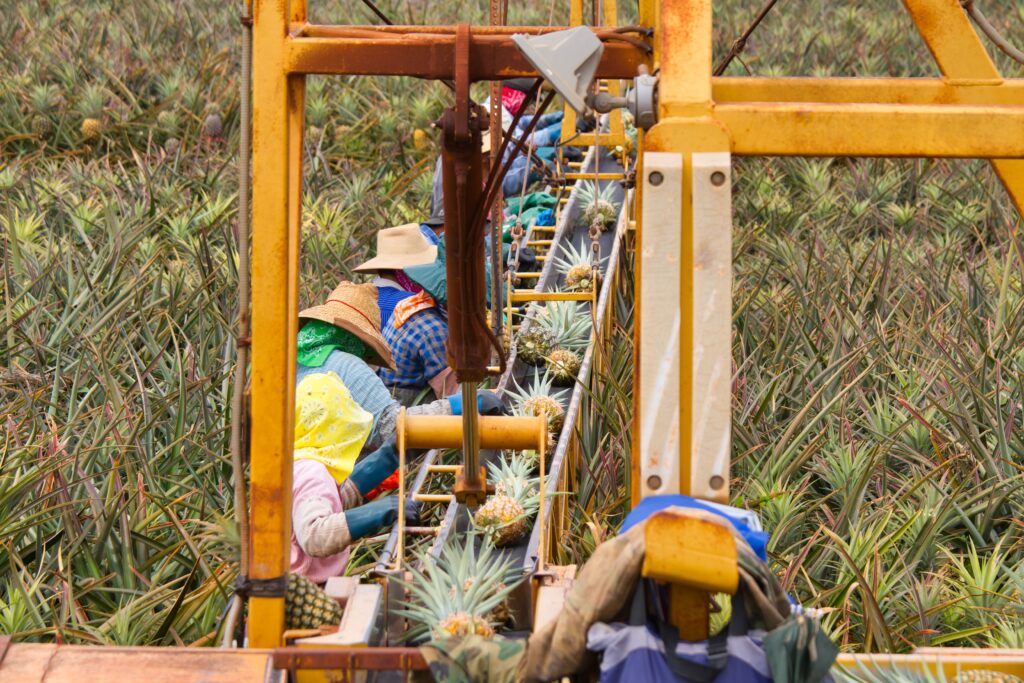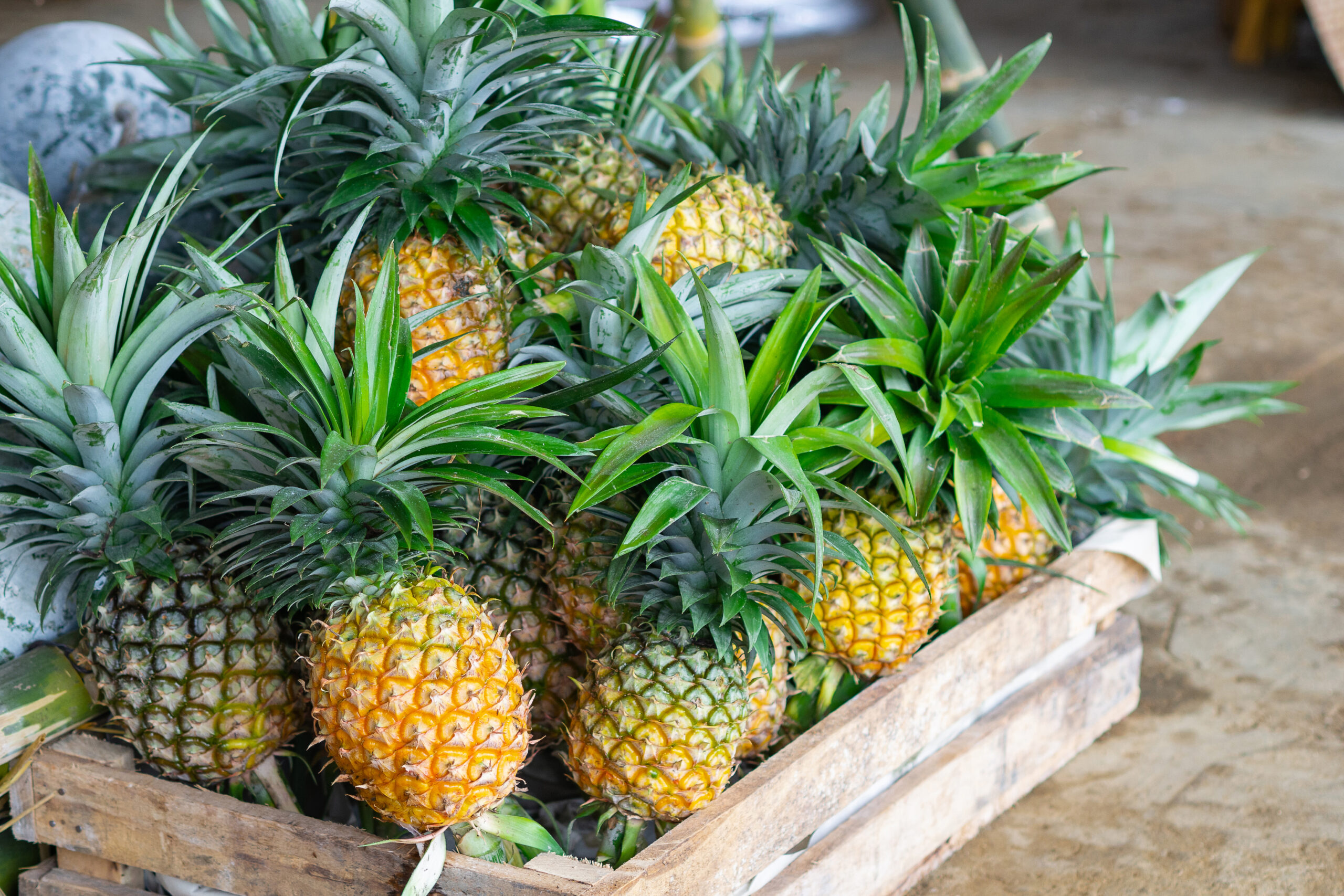Pineapples. Who does not enjoy the sweet and sour flesh from time to time? Freshly sliced, the yellow fruit is juicy and rich in vitamin C and fibre. It is a tropical fruit that is grown in many places over the world.
The fruit is used to make juice or eat raw, or in dishes like salads and deserts, or as a garnish with meat and pizza. In the Philippines, the leaves are used to make textiles and twine, and they are even used for medicinal purposes.
By-products of fruit processing are wine or vinegar. Dried fruit waste can even be fed to livestock. Pineapples originated from Guadeloupe in the Caribbean. Today they are produced in many places across the globe where there is a tropical climate. In Africa, Tanzania, Angola, and South Africa are the bigger role players. Two varieties that show success in Africa are the smooth leaf Cayene (Hawaiian) and the thorny leaf Queen (Formosa).

Soil and climatic requirements
To grow pineapples, it is best to ensure that they are planted in sandy loam to clay loam soils. It is key that the soil drains well, so there should be enough organic material. The pH should be between 4,5 and 5,5. The ideal temperature should be stable between 24 to 30 °Celsius. The ideal rainfall for pineapple plants is 1 000 to 1 500 mm per year, with optimum conditions created when the water is evenly distributed throughout the year.
Soil preparation
To start the soil preparation, plough and harrow the designated field. You should harrow it up to three times until a fine bed is created. Next, create furrows to serve as drainage channels for excessive water. If it is an old field that is being replanted, first have the old plants uprooted, placed in a heap, and burned to use as compost. Commercial farms require deep ploughing of 60 to 75 cm. Remember to leave enough space on the ridges so plants can still be accessed for harvesting and weeding.

The fruit turns yellow when it is ready for harvest. (Source: Vecteezy)
Planting
Pineapples are usually propagated with cuttings. They are called suckers, slips, and crowns. Suckers are the parts that develop at the base of the leaves. Slips and crowns develop at the base or above the ground, or on top of the fruit. Make sure you get the planting materials six to eight weeks after harvesting the plant from which the cuttings will come. These materials should be similar in size and type to promote uniform flowering and fruiting. Before the cuttings are planted, they need to be cured in sunlight for approximately one week.
This helps to prevent infection and rotting. 22 to 24 months after crowns are planted, they will flower. For slips it takes 18 to 20 months, and suckers flower after 16 to 18 months. Pineapples can be planted either in single or double rows. For single row planting, space the plants 80 to 100 cm apart in rows 25 to 30 cm apart. For double rows, plant the pineapples 20 to 30 cm apart in a row, with 50 cm between the rows, and 80 to 100 cm between the double rows.

Pineapples are harvested by hand. Here workers are collecting a successful harvest (Source: Vecteezy)
Fertiliser programme

Table 1. Fertiliser recommended for small farms.
Fertilisation
Planting a pineapple crop in fertile soil is more important than trying to make plants grow through fertiliser alone. The quantity of fertiliser that you apply will depend on the soil condition. Make sure to do a soil analysis where possible so you know what your field needs. You may choose to use both organic and inorganic fertilisers on your crop. Use the dosage recommendations from Table 1 as a fertiliser programme.
It is common practice for pineapple growers to induce flowering through fertiliser to promote year-round production and uniform flowering and fruiting. This practice stabilises production and provides an income all year long. Plant size determines when flowering should be induced.

Pineapples have many culinary uses. This includes being juiced for a drink, or sliced for a snack. (Source: Vecteezy)
Commercial farms induce flowering when the plants have at least 36 functional leaves or reached a height of 1,2 m in middle elevation and 1 m lower in lower elevation. Calcium carbide (CaC2) can be used for this and gives approximately 60 to 70% flowering. Prepare the solution by dissolving two kilogrammes of calcium carbide in 19 litres of water. Apply 30 ml onto the growing point of each pineapple. The pineapple will flower approximately 40 days after flowering was induced with fertiliser.
Sources:
Arcelo, M.M. 2010. Pineapple production guide. Department of Agriculture – Bureau of Agricultural Research. Available: https://library.buplant.da.gov.ph/images/1641883999Pineapple%20%20Production%20Guide.pdf.









